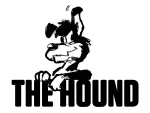The move, long called for by spreader operators and some farmers – notably those in the cropping sector (Rural News, April 9) – was finalised at the latest meeting of the Fertiliser Quality Council.
Ravensdown general manager of strategic development Richard Christie says it follows “a number of discussions over a number of months on the Fertmark standard, not just about chemical quality, which it does now, but for it to include physical quality too.
“What the [New Zealand] manufacturers have agreed is to investigate the physical quality of their products and work towards putting parameters on the physical quality of certain products.”
Problems reported over the years fall into two broad categories, says Christie. Groundspreaders’ concerns have mainly been with variable spreadability of superphosphates, while cropping farmers, seeking to use ever wider tramline spacings, have found some high analysis products won’t spread evenly to 24m or more.
The move has been welcomed by New Zealand Groundspread Fertilisers’ Association president Stuart Barwood. “We’ve been highlighting this for years, ever since they introduced Fertmark, taking them lumps of product and asking them ‘what do you expect us to do with this?’,” he told Rural News.
Poor spreadability of superphosphate last year saw one of his spreaders, previously Fertmark accredited to spread 29m, downgraded to an 18m maximum spread width. “There’s been no change to the spreader.”
Rural News understands Barwood’s machine is not the only one to suffer a similar spread-width reduction.
In theory that reduction should be costing farmer clients because it takes his spreader longer to cover the same area, says Barwood, but because they charge by the hectare, not the hour, to date they haven’t changed their rates, “silly buggers that we are,” he notes.
Barwood says imported DAP and urea are reasonably consisistent but it’s locally manufactured product that’s the problem. “It all depends what rock they use [for superphosphate].”
Christie acknowledges superphosphates are typically softer than imported high analysis products. “That affects how they behave in the spinner.”
The nature of the spinner also affects performance. Christie says the aim is to come up with hardness and size parameters for core products, most likely those already carrying Fertmark ticks on price lists, which will define a certain level of performance in a certain type of spinner. “We need to temper expectations as to what each product can be expected to do. Certain high analysis products will spread to 24m but there might need to be a cut-off if growers expect them to get to 30m.”
Cropping farmer Jeremy Talbot, who’s long campaigned for European-type spread standards to be introduced, says the move is long overdue. “But good on Ravensdown for finally taking the lead on this.”

















